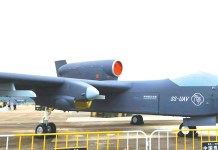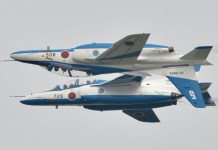China’s PLA Navy’s warships warned away US guided-missile destroyer Mustin for “stalking” the Liaoning aircraft carrier group near Taiwan, according to reports.
China’s Ministry of National Defense spokesperson Wu Qian said at a press conference on April 29 today (29th) that during the “normal” training activities of the Liaoning ship carrier formation in the relevant waters, the US warship Mustin was found conducting “close-up reconnaissance” on the Chinese carrier strike group.
He said the Mustin interfered in the Chinese exercises and threatened the safety of naval vessels and personnel of both sides.
The exercises were held close to Taiwan and in the disputed South China Sea, Global Times reported on April 29.
“Close-range provocations like what the US warship did could result in misjudgments and accidents, Song Zhongping”, a Chinese military affairs expert and TV commentator, told the Global Times.
This is not the first time the USS Mustin has been found trailing Liaoning, China’s first aircraft carrier. On April 11, the US Navy had released a photo showing the USS Mustin’s captain, Commander Robert J Briggs, and his deputy Commander Richard D Slye lazily watching the Liaoning from about a mile away.
“This staged photograph is definitely ‘cognitive warfare’ to show the US doesn’t regard the PLA as an immediate threat,” said Lu Li-shih, a former instructor at Taiwan’s Naval Academy in Kaohsiung told the South China Morning Post.
Beijing-based South China Sea Strategic Situation Probing Initiative said that the USS Mustin had reached near the mouth of the Yangtze River on April 3 when the Liaoning, escorted by 5 other Chinese warships, had passed through the Miyako Strait. The straits are located near the disputed Senkaku/Daiyo islands which both Japan and China claim.
Afterward, the USS Mustin had been following the Liaoning through the East and South China Seas.
Akin to the exchange from earlier this month, the Liaoning had again reportedly crossed the Miyako Strait on April 26 and sent an aircraft near the disputed Diaoyu/Senkaku Islands the next day. Chinese experts said such actions will send a warning to Japan after the country’s Defense Minister Nobuo Kishi recently said that China is invading in a subtle way, step by step.
On both occasions, the Liaoning was accompanied by the Type 055 stealth large guided-missile destroyer Nanchang, the Type 052D destroyers Chengdu and Taiyuan, the Type 054A frigate Huanggang and the Type 901 comprehensive supply ship Hulunhu.
The Eurasian Times previously reported that the Chinese actions should be viewed in light of increased QUAD drills in the Indo-Pacific region. The QUAD is a US-led bloc that stands for a free and open Indo-Pacific in a bid to counter Chinese aggression in the region.
As Chinese aggression increases, so does American response, feeding a neverending loop. Under Biden, the presence of US military ships has gone up 20% and of planes by 40%, Wu had stated.
Japan has also responded with its own projection to Chinese incursion. On April 4, Tokyo had flown a Y-9 patrol aircraft across the Miyako Strait and later sent a destroyer JS Suzutski and a P-1 Maritime Patrol Aircraft (MPA), along with a P-3C anti-submarine warfare aircraft “to monitor and gather information on the Chinese vessels.”
But Japan has also expressed worry about growing friction between China and the US. Regarding the USS Mustin photo, a Japanese government official had told the Japan Times that it might create unnecessary friction with China. Maritime Self-Defense Force Chief of Staff Adm. Hiroshi Yamamura emphasized the role of communication in such a context to avoid problems.
Written by Aswathy K.




